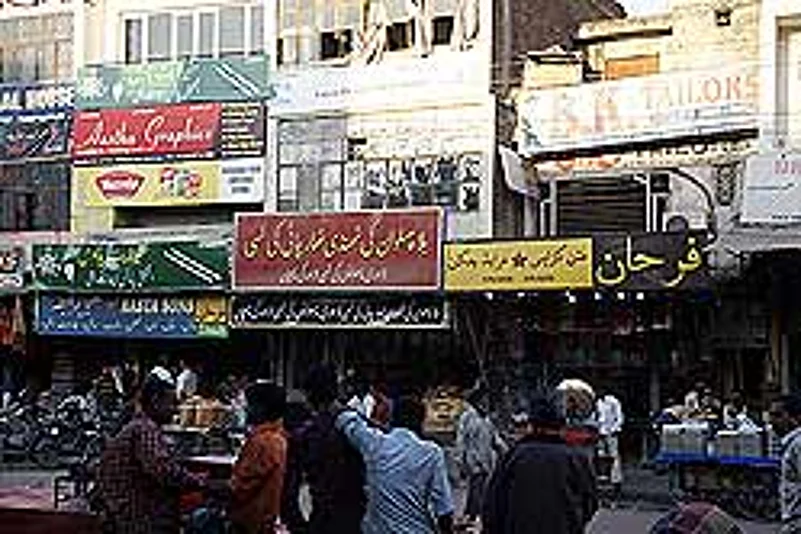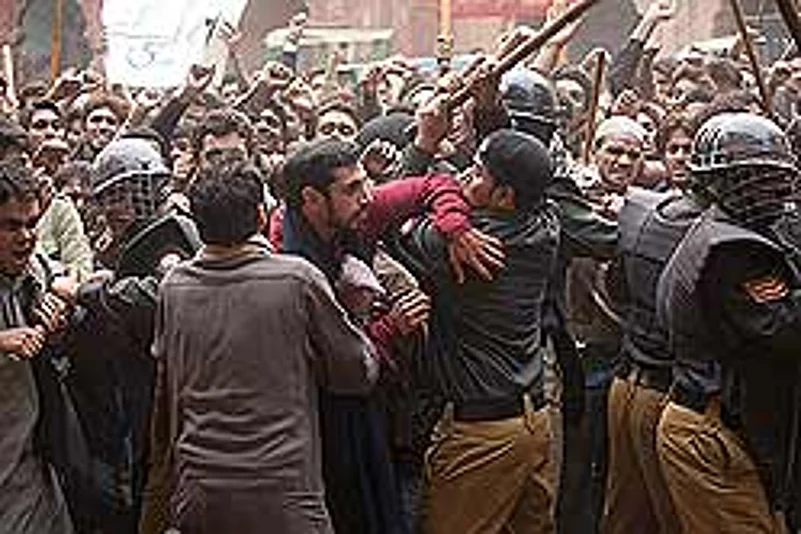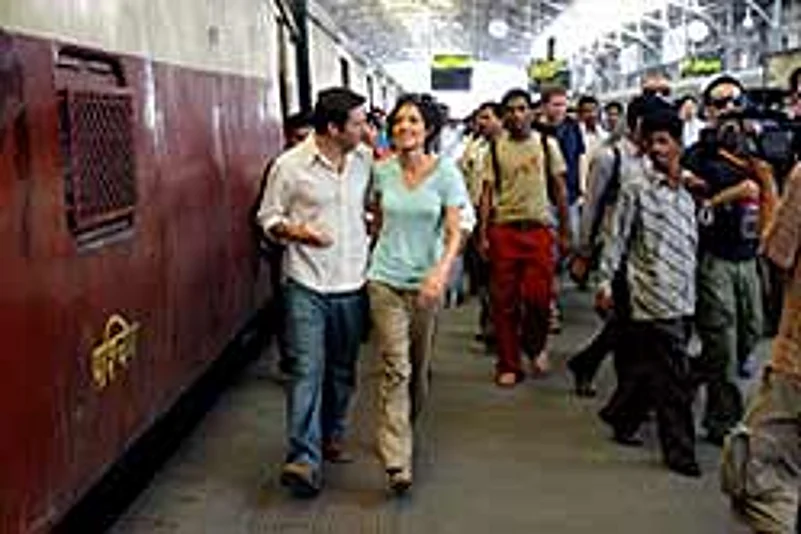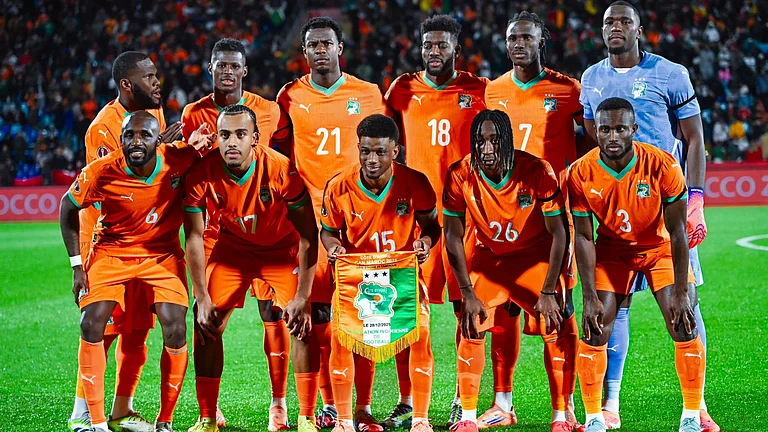India is not Pakistan. But on celluloid it is. It is true that one suspends disbelief in the dark of the cinema hall. Even so, one seeks some verisimilitude in what is portrayed: similarity, perhaps, in terms of locale, dress, day-to-day conversation. With two countries as similar as India and Pakistan, if you’re a filmmaker and want slices of Pakistani life in your films, India can play host to recreating your dreams on celluloid. The magic of cinematography can make parts of Le Corbusier’s Chandigarh come alive as a marketplace in the gritty port of Karachi and Mohali can do duty as Lahore. In a spate of films—Zero Dark Thirty, on Osama bin Laden, The Reluctant Fundamentalist, or West is West—India is being recreated as Pakistan. It seems that makers of a biopic on Lady Diana, too, want to shoot Lahore in India.
In the last few years, at least six films with Pakistan as a backdrop have been shot in the twin cities of Chandigarh and Mohali, even in Delhi. Of the 15 proposals received by the Union information and broadcasting ministry in the last two years, 12 were approved; most of them, say officials (who couldn’t recall the exact figure offhand), had story links to Pakistan. So whether it’s Kathryn Bigelow’s Zero Dark Thirty or, a little in the past, the Angelina Jolie-starrer Mighty Heart, Pakistan is being recreated in India. The recent history of the subcontinent is providing filmmakers—many from Hollywood—fertile ground for story and setting in the region. And officials in the information and broadcasting ministry say India is more than willing to facilitate such shoots in India.


| Zero Dark Thirty Recreating Abbottabad in Chandigarh Director: Kathryn Bigelow | Reluctant Fundamentalist Recreating Lahore in Delhi Director: Mira Nair | |


| A Mighty Heart Recreating Karachi in Pune Director: Michael Winterbottom | West is West Recreating Pakistan in Jayanti Majri, Punjab Director: Andy de Emmony |
Informally, Indian production companies—which tie up with foreign filmmakers, helping them with the bureaucratic maze of seeking approvals and getting permits, besides actual shoots—let you know that seeking permission to shoot in Pakistan is an arduous process. India, despite its chequered history in granting approval, has emerged as a favoured haunt for filmmakers seeking to frame approximations of Lahore or Karachi. Films are a rich vein of commerce. The Indian government has been slow to realise this, but the realisation having dawned, it’s working overtime to dispel the image of being difficult to deal with.
While that may be heartwarming, it’s also unfortunate that some films could not be shot here. The first step—script approval—is supposed to be time-bound: no more than three weeks. But filmmakers have found that it can prove to be an experience in timelessness. Then there are other reasons: the list of films that were approved but red-flagged by the information and broadcasting ministry later is legion. Shooting for Joe Wright’s Indian Summer, based on the folkloric relationship between Jawaharlal Nehru and Lady Edwina Mountbatten, was scrapped: the government did not warm up to the ‘love story’. Acclaimed Iranian filmmaker Majid Majidi is still awaiting approval for shooting a film on the Prophet in India. He wanted to set some scenes in the deserts of Rajasthan.
More recently, the James Bond film Skyfall could not be shot in India as permission from the railway ministry was hard to come by. A crucial roof-top fight sequence on a train, which could have showcased Indian Railways, was to be filmed here. While the railways took its time despite all other approvals being granted, the filmmakers went shopping for a new location. Deepa Mehta took the filming of Salman Rushdie’s Midnight’s Children to Sri Lanka, as the government found the storyline contentious.
It is to dispel these images of a recalcitrant government that the information and broadcasting ministry, it is learnt, has put a note to the cabinet, which if approved will lead to a ‘Film Commission of India’—a single-window clearance for filmmakers who wish to shoot here. Although the commission will not be a statutory body, ministry officials say it would “short-circuit” the process of getting approvals from different wings of the government.
The commission will have representatives from the state governments too. This is because some of the approvals have to be sought from local authorities. For example, gondola shots—in which the camera is suspended mid-air for a looming view—have to be approved by the authorities of the district and the tehsil it is being shot in. In fact, to expedite the process, senior officials have sometimes requested district authorities to look the other way when a film was being shot. It is to end such problems that the ministry has proposed the new commission.
According to a draft note from the information and broadcasting ministry, joint secretary-level officials will meet once a month to scrutinise proposals for shoots at particular locations. This is aimed at preventing delays, for the government has realised that filmmakers’ arrival for shoots could eventually lead to collaborative or standalone ventures that will translate into big business. The cabinet note seeks to make approval a one-time process—all the little things covered in one go. The ministry is also working to create a website to provide information filmmakers would find useful before they begin work in India.
Last year, a FICCI report painted a bleak picture of Hollywood films released in India: of 531 made in 2010, less than half were released in India. The trend of foreign filmmakers coming here to make films may perhaps change that a bit; a little easing of procedure by the concerned ministries could help that. So for the peddlers of dreams, India might be the emerging Pakistan-on-film, but for the Indian government it is also about setting its image right.


























